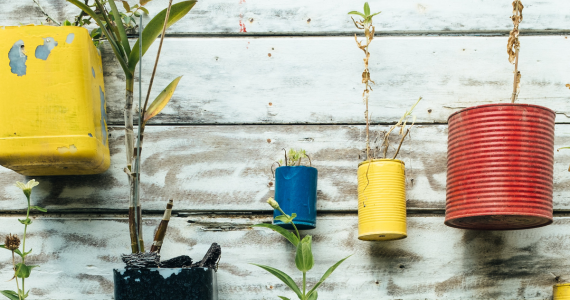Bucketing is a smart way to manage your money without complicated budgets or spreadsheets. The idea is to set up multiple bank accounts called ‘buckets’ and use each one for a specific purpose, like bills, savings or entertainment. Once your buckets are set up, it’s easier to see and control how you spend and save your money.

The benefits of bucketing
If you’re not good with money and struggle to save, then bucketing could work for you. Many use it to reduce debts, control spending and achieve bigger goals, like buying a home or saving for retirement. Bucketing can also help you save your money for larger but infrequent bills like car registration, school fees and energy bills.
Step 1. Work out where you spend your money
It’s important to work out exactly how you spend your money. Use a budget planner calculator to make it easier to see where your income goes. Once you’ve done this you’ll feel more in control of your money and have a clear view of areas you can save.
Step 2. Group your spending into categories
Group each category of your spending into a few themes such as regular and daily expenses, spending money and savings, then add up the total amounts in each theme. These themes will become your buckets or accounts. You can have as many buckets as you like but here’s an example of how to group them:
Bucket 1 – Regular and daily expenses
This is for regular bills, rent, mortgage, debts, groceries, transport, school fees, insurances and holidays. This account should be linked to a debit card.
Bucket 2 – Spending money
Use this bucket for fun money to splurge on things like socialising or treating yourself and others. This account should be linked to a debit card. You can use an app to take control of your spending.
Bucket 3 – Emergencies and safety money
This one is for the big or unexpected expenses that can catch you off guard, like home or car repairs, dental work or paying off debts. This account should earn interest and have no debit card, so you’re not tempted to spend.
Bucket 4 – Savings
Use this to put aside money for things like travel, a new car or reducing debt. Ideally this should be an account that earns interest and has no debit card.
Step 3. Open your bucket bank accounts
You’ll need a basic transaction account to get started.
Once you have opened a transaction account, you can easily open more accounts.
For more budgeting tips, give us a call.
Source: NAB
Reproduced with permission of National Australia Bank (‘NAB’). This article was originally published at https://www.nab.com.au/personal/life-moments/manage-money/budget-saving/money-bucket
National Australia Bank Limited. ABN 12 004 044 937 AFSL and Australian Credit Licence 230686. The information contained in this article is intended to be of a general nature only. Any advice contained in this article has been prepared without taking into account your objectives, financial situation or needs. Before acting on any advice on this website, NAB recommends that you consider whether it is appropriate for your circumstances.
© 2022 National Australia Bank Limited (“NAB”). All rights reserved.
Important:
Any information provided by the author detailed above is separate and external to our business and our Licensee. Neither our business nor our Licensee takes any responsibility for any action or any service provided by the author. Any links have been provided with permission for information purposes only and will take you to external websites, which are not connected to our company in any way. Note: Our company does not endorse and is not responsible for the accuracy of the contents/information contained within the linked site(s) accessible from this page.



